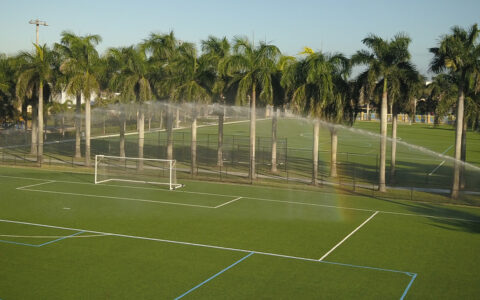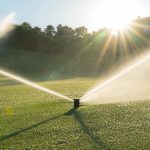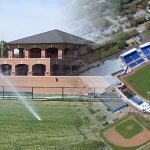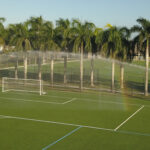Get to the Root of Turf Issues With Toro® Soil Sensors
When it comes to maintaining healthy turf, summer is an important time to stay proactive. Toro has the soil monitoring tools to help you know what’s going on beneath the surface all season long, so you can make timely, more informed adjustments to your irrigation and product application schedules.
Sports field and grounds managers can choose between two soil sensor options from Toro based on preferences and requirements for the site.
Option 1: Toro Pro Series™ Soil Sensor
The Toro® Pro Series™ soil sensor is a wireless soil moisture sensor that works in conjunction with the Toro Sentinel® central irrigation control system. It can be used to automate irrigation scheduling or simply as a graphical informational tool, enabling you to track moisture trends and make your own irrigation decisions based on the information provided.

How Pro Series Soil Sensors Work
Each Pro Series sensor has two basic components: a radio transmitter and a sensor probe, both separated from each other by a 3-foot (.9 meter) tether. With this unique tethered design, the sensor probe can take measurements anywhere from just below grade to upwards of 3.5 feet (1.1 meters) below the surface. That makes it suitable for tracking conditions for anything from shallow turf roots to large trees and anything in between.
Wireless radio communication from the sensor to the controller base station makes installation simple, with no trenching required. The sensor can either be completely buried in the soil for greater vandal resistance or installed in a valve box for easier servicing.
Up to 16 sensors can be used with any Sentinel controller, transmitting real-time moisture data every 5 minutes. The Sentinel system’s graphical overview displays moisture data at a glance. The system also offers the option to set upper and lower moisture level “trip points” to automate irrigation scheduling.

Option 2: Toro® Turf Guard® Wireless Soil Monitoring System
Another choice that’s particularly popular with sports fields is the Toro® Turf Guard® wireless soil monitoring system. Turf Guard wireless sensors are designed to track three soil characteristics: moisture, salinity and temperature.
The added capability of tracking temperature and salinity has a number of benefits. Temperature data can help you determine when to apply herbicides, fungicides and pesticides for maximum effectiveness, and salinity measurements show if salts are building up and need to be flushed from the soil — a measurement that’s especially important in areas that irrigate with reclaimed water.

How Turf Guard Soil Sensors Work
The Turf Guard sensor is a dual-level sensor, which means there are probes on the top and on the bottom of the sensor to take measurements at two different depths in the soil. Unlike the Pro Series Soil Sensor, the Turf Guard sensors and radio communications are contained within the same unit, so their intended use is with shallower roots, like turf, just a few inches below the surface.
Like Pro Series sensors, Turf Guard sensors are also wireless and easy to install with no trenching required — so they can be installed anywhere on a sports field without disrupting play. Up to 500 sensors can be installed per system. Those sensors can either communicate directly with a base station that’s connected to the Internet or with repeaters that extend the range of communication back to the base.
When Turf Guard sensors are used as a standalone tool (as opposed to being used with Sentinel controllers), information from the soil sensors is served up through the SiteVision™ software. This easy-to-use graphical interface displays sensor data in real time and tracks historical data. Also like the Pro Series, Turf Guard sensor data can be transmitted to the Sentinel central control system for automated irrigation control based on soil moisture data.

Advantages of Soil Monitoring
Whether you choose the Pro Series Soil Sensor or Turf Guard sensors, there are several key benefits to having a soil monitoring system in place. Perhaps most obviously, moisture data can be used to adjust your irrigation schedule to avoid overwatering or prevent dry areas from impacting turf health. It can also help you reduce water usage without compromising turf quality.
With soil sensors, you can determine what’s going on beneath the surface of an area remotely from your office computer with less guesswork and less need to physically drive around to different sites for inspection. You also have the ability to refer to historical data and replicate soil and turf conditions from periods when a sports field was observed to be in optimal condition.
For more information about Toro’s Pro Series Soil Sensor and Turf Guard soil monitoring products, see your local Toro distributor or visit www.toro.com.











